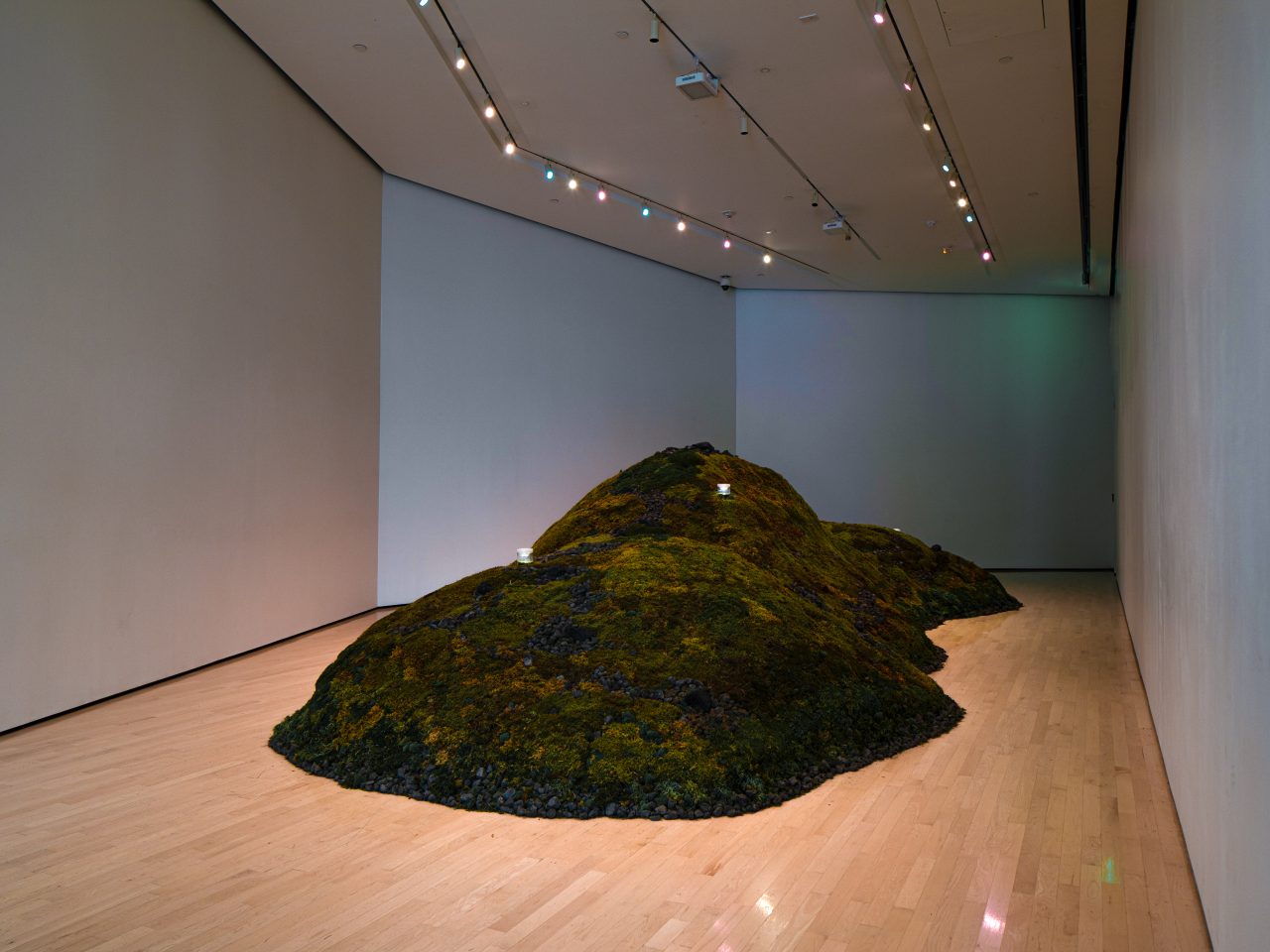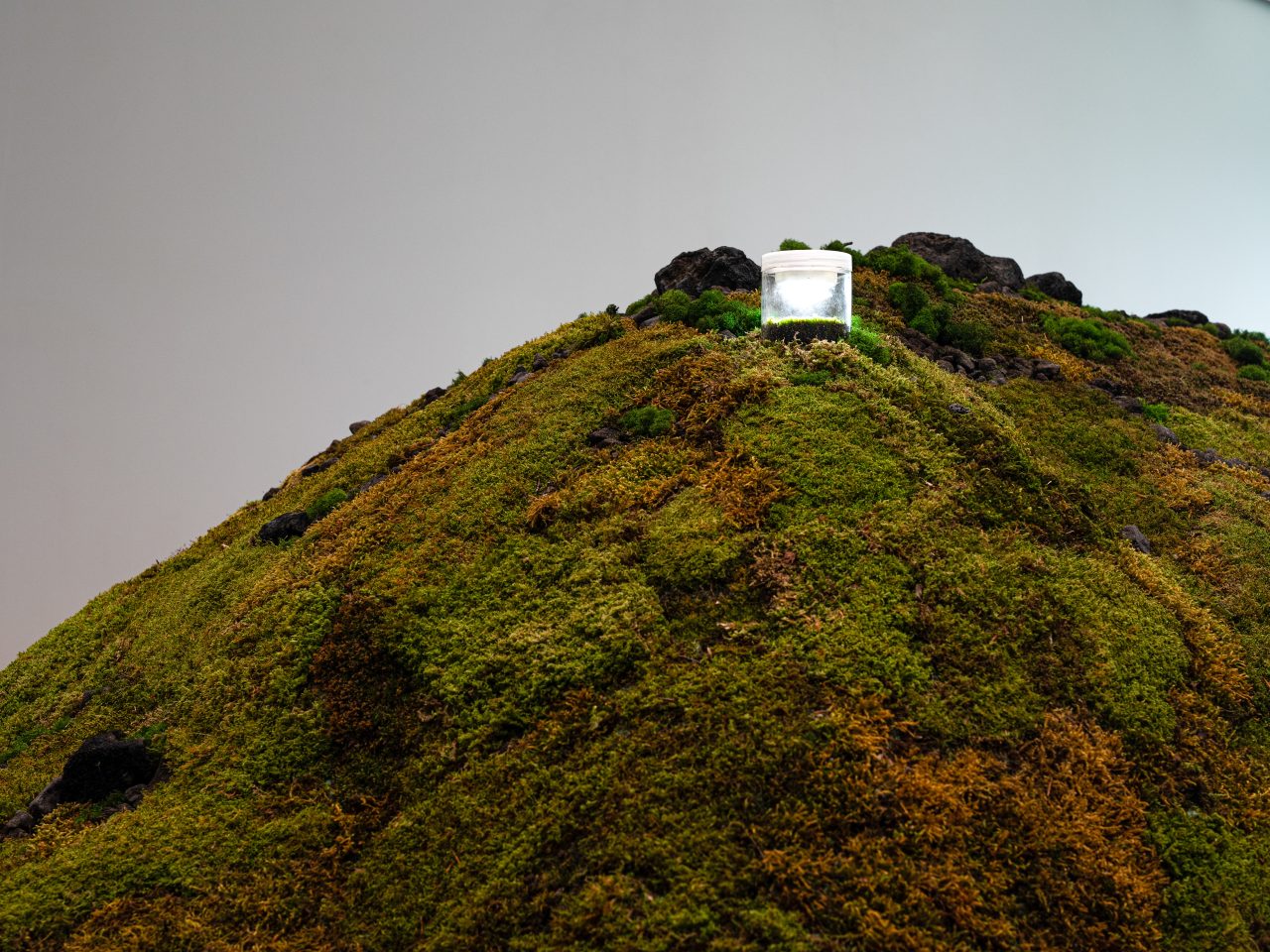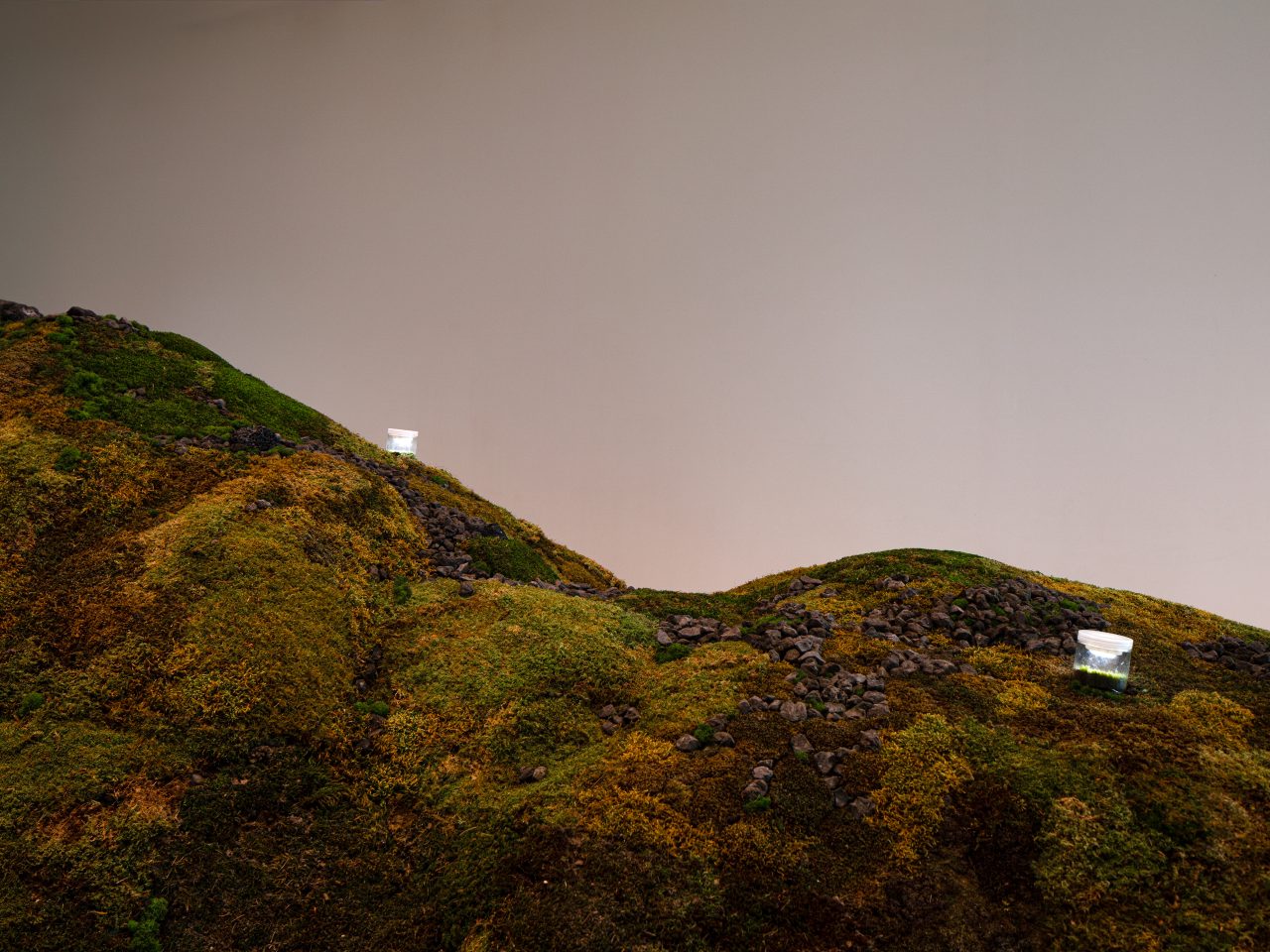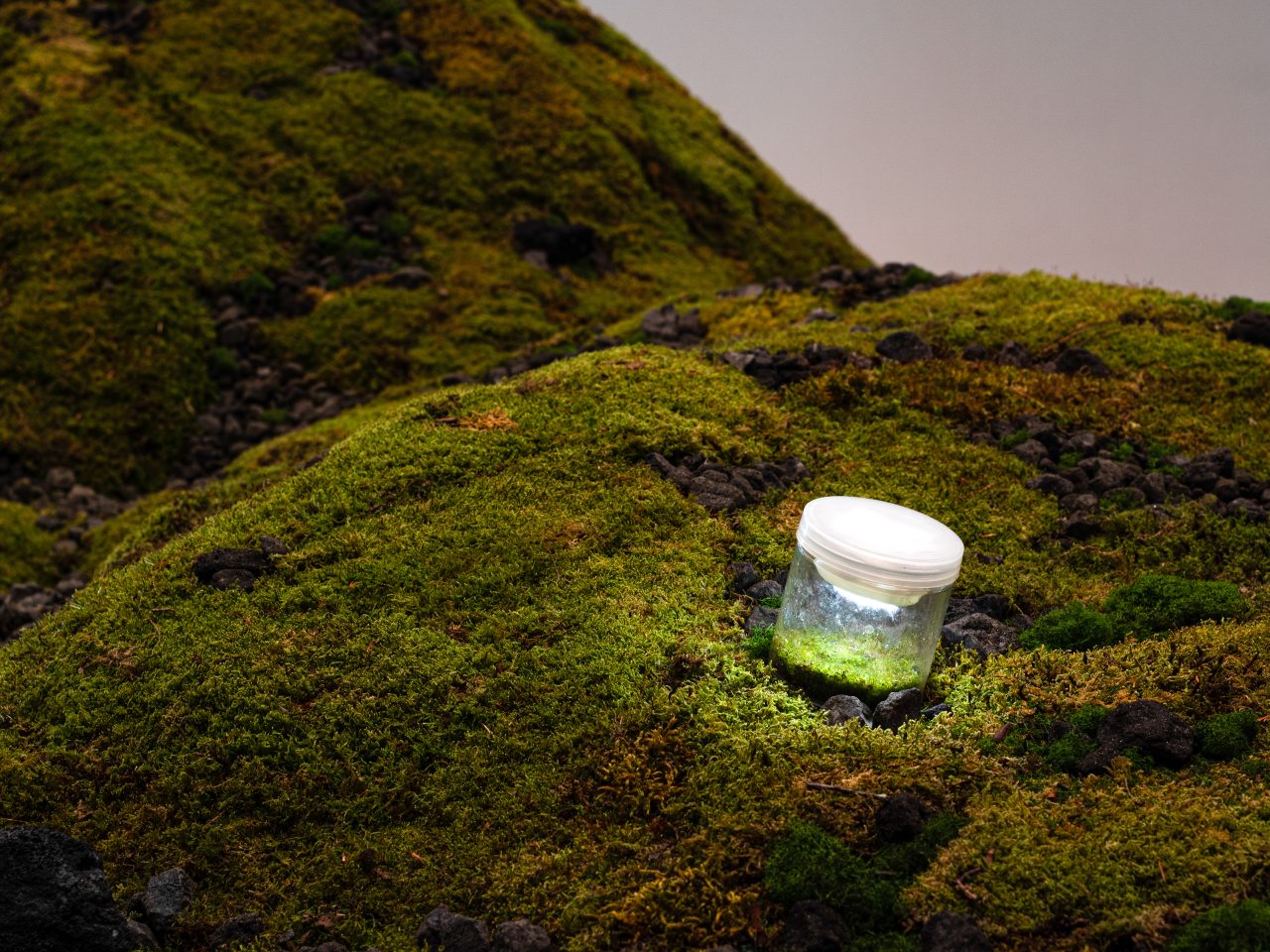Field Station: Spirit Molecule is organized by the Eli and Edythe Broad Art Museum at Michigan State University and curated by Steven L. Bridges, Associate Curator. Support for this exhibition is provided by the MSU Federal Credit Union.
About the Exhibition
A large mound of earth occupies the center of the gallery. Four beacons of white light shine upward from the mound. The gallery has become a grow lab that transports visitors to an otherworldly realm. In this setting, Heather Dewey-Hagborg and Phillip Andrew Lewis cultivate the “spirit molecule.”
For this iteration of Field Station, Dewey-Hagborg and Lewis explore new possibilities in gene editing toward the creation of a genetic memorial. Combining Dewey-Hagborg’s practice of genetic hacking with Lewis’s experience with psychoactive botany, they aspire to engineer human DNA into a plant, which could be consumed as part of a final journey of intimacy with a lost loved one. The project has the potential to shift the dialogue around how we confront death and develop new cultural forms of mourning and communion.
This highly experimental biological intervention is undertaken in collaboration with MSU assistant professor Bjoern Hamberger and his team in the Departments of Biochemistry and Molecular Biology. Part of a larger, ongoing effort by the artists, Spirit Molecule represents a major step forward in successfully inserting human DNA into the cells of a type of moss, Physcomitrella patens. While Physcomitrella patens itself does not have psychoactive properties, the earthen landscape in the gallery includes a species of liverwort (Radula perrottetii) that produces the psychoactive compound perrottetinene, which is similar to THC. The presence of the liverwort as part of the setting for the transgenic moss points to the artists’ vision to one day insert recombinant human DNA directly into a plant with psychoactive properties.
The team is currently working to produce four genetically modified moss plants, each containing the mitochondrial DNA of a different individual. Each moss thus represents the particular person who volunteered to support the project by donating their DNA. The moss has also been engineered to express the scent of patchouli (Pogostemon cablin), a plant often used in incense that evokes the aura of the 1960s psychedelic movement.
Spirit Molecule calls attention to how new scientific advances and the changing role of artists in society have the potential to alter cultural perspectives and beliefs. These evolutions are of course happening all the time, but they do not always register in the individual or collective psyche. With this work, Dewey-Hagborg and Lewis attempt to harness changing realities and direct them toward more humane and empathetic outcomes. With the support of MSU, the artists are able to advance, in ethical ways, the conversation around genetic engineering and the medicinal potential of psychoactive plants. The artists also tap into the spirit of research and collaboration that is a core value of the university—part of its own institutional DNA.
Along with our gratitude to Bjoern Hamberger, the artists and museum would also like to recognize the important roles played by Aparajita Banerjee, Britta Hamberger, and Davis Mathieu in the development and realization of this project. Thanks as well to Fathomers, a creative research institute dedicated to producing sites and encounters that challenge us to live and act differently in the world.
Dewey-Hagborg is also including Spirit Molecule as one of three projects featured this summer in her solo exhibition, At the Temperature of My Body, at the Fridman Gallery in New York






